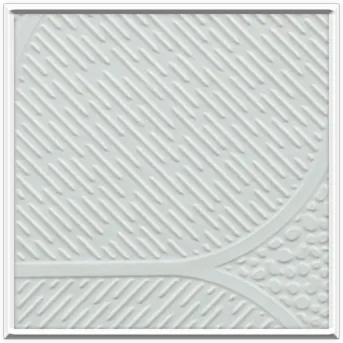- Afrikaans
- Albanian
- Amharic
- Arabic
- Armenian
- Azerbaijani
- Basque
- Belarusian
- Bengali
- Bosnian
- Bulgarian
- Catalan
- Cebuano
- Corsican
- Croatian
- Czech
- Danish
- Dutch
- English
- Esperanto
- Estonian
- French
- German
- Greek
- Hindi
- Indonesian
- irish
- Italian
- Japanese
- Korean
- Lao
- Malay
- Myanmar
- Norwegian
- Norwegian
- Polish
- Portuguese
- Romanian
- Russian
- Serbian
- Spanish
- Swedish
- Thai
- Turkish
- Ukrainian
- Uzbek
- Vietnamese
ديسمبر . 12, 2024 01:48 Back to list
t grid suspension system
T Grid Suspension System A Comprehensive Overview
The T Grid Suspension System represents a significant advancement in the field of infrastructure design and construction. This innovative system is primarily used in the development of suspended ceilings, which are integral to modern architecture. In this article, we will explore the components, benefits, installation methods, and applications of the T Grid Suspension System, highlighting its importance in contemporary building practices.
Understanding the T Grid Suspension System
At its core, the T Grid Suspension System consists of a framework that supports ceiling tiles. The structure is made up of T-shaped cross members that create a grid-like pattern on the ceiling, hence the name. The T refers to the profile of the main and cross tees that form the grid, which is crucial for providing stability and support.
The grid system can accommodate various ceiling materials, including gypsum boards, acoustic tiles, and decorative panels. These materials differ in aesthetics, sound absorption, fire resistance, and thermal insulation properties, thus allowing architects and designers to choose solutions that best fit their specific needs.
Benefits of the T Grid Suspension System
1. Simplicity of Installation One of the most notable advantages of the T Grid Suspension System is its ease of installation. The modular nature of the grid allows for quick assembly and disassembly, making it ideal for both new constructions and renovations.
2. Cost-Effectiveness The use of the T Grid system can significantly reduce labor costs associated with ceiling installations. Its straightforward assembly requires fewer specialized skills, enabling construction teams to work more efficiently.
3. Versatility The T Grid Suspension System is highly versatile, as it can be used in various building types, from commercial offices and retail spaces to educational institutions and healthcare facilities. This adaptability makes it a preferred choice among architects and builders.
4. Aesthetic Appeal While functionality is paramount, the visual aspect of a building is equally important. The T Grid system allows for a range of ceiling designs, including the integration of lighting fixtures and HVAC systems, contributing to the overall aesthetic of the interior space.
5. Acoustic Performance Many commercially available ceiling tiles compatible with the T Grid system are designed for sound absorption. This feature is especially beneficial in settings where noise control is critical, such as in offices, classrooms, and auditoriums.
t grid suspension system

6. Easier Access to Infrastructure The grid allows for easy access to plumbing, electrical, and HVAC systems that may be housed above the ceiling. This accessibility facilitates maintenance and future modifications, thereby extending the life cycle of the building.
Installation Process of the T Grid Suspension System
The installation of a T Grid Suspension System typically involves several key steps
1. Planning and Design Before installation begins, a detailed plan needs to be developed, which includes measurements of the space, choice of ceiling tiles, and layout of the grid.
2. Marking the Installation Height The desired height of the ceiling is marked on the walls, using a level to ensure an even installation.
3. Installation of Main T-Girders The main tees are installed first, spaced according to the plan. They are secured to the walls using appropriate anchors.
4. Inserting Cross Tees Next, cross tees are inserted to create the grid. The spacing and arrangement will depend on the size of the ceiling tiles being used.
5. Installing Ceiling Tiles After the grid framework is complete, ceiling tiles are inserted into the grid, completing the installation.
Applications of the T Grid Suspension System
The T Grid Suspension System finds applications across various sectors. In commercial settings, it enhances office aesthetics while providing efficient acoustic solutions. In educational institutions, it allows for versatile classroom designs. Healthcare facilities use the system to provide a sterile and noise-controlled environment, essential for patient care.
In summary, the T Grid Suspension System is an essential component of modern construction and design. Its ease of installation, cost-effectiveness, acoustic performance, and versatility make it a favorable option for architects and builders. As construction technology continues to evolve, the T grid remains a staple in creating functional and aesthetically pleasing spaces. With its wide range of applications, it is clear that the T Grid Suspension System will continue to play a crucial role in shaping the interiors of our buildings for years to come.
-
Transform Interiors with PVC Gypsum Ceiling: A Stylish, Durable, and Moisture-Resistant SolutionNewsMay.19,2025
-
The Smart Interior Upgrade: Discover the Durability and Versatility of Gypsum Ceiling Access Panel SolutionsNewsMay.19,2025
-
The Smart Choice for Interior Design: Discover the Value of PVC Gypsum Ceiling SolutionsNewsMay.19,2025
-
Mineral Fiber Ceiling Tiles: The Smart Blend of Performance and AestheticsNewsMay.19,2025
-
Mineral Fiber Ceiling Tiles: The Superior Choice Over Gypsum for Sound and Fire SafetyNewsMay.19,2025
-
Mineral Fiber Ceiling Tiles: Eco-Friendly Strength and Style for Every CeilingNewsMay.19,2025







